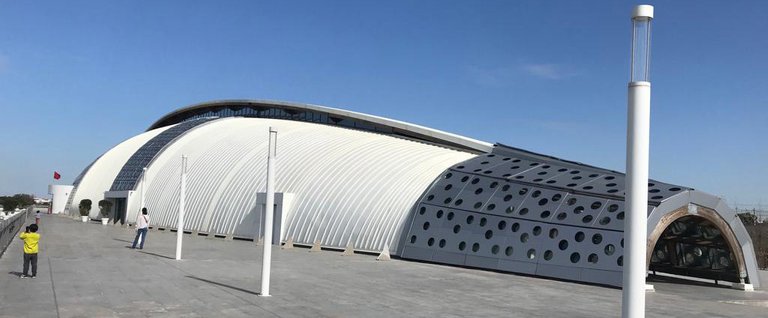100 Years Rabat –Then and Now

The Kingdom of Morocco is developing at a breathtaking pace. Modern infrastructure projects, transport networks, manufacturing plants, trade free zones, luxury resorts, high-tech medical research facilities, centers of higher education and so on are springing up all over the place. The country is rapidly transforming into a global player, a business hub and a thriving attraction for tourism, performing and visual arts and culture. In doing so, the architectural landscape has changed from the traditional colonial look to space-age and environmentally sustainable building development concepts. Just look at the new interstate bus terminal in Rabat and you will see what I mean:

This place looks like you are boarding a spaceship and not waiting for a bus.
While the country is buzzing with hopes and dreams for a brighter future, evidence of the Kingdom’s difficult colonial past is fading away more and more. French colonial architecture is disappearing quickly to make room for a new era of modernity and prosperity.
The other day I found a bunch of old postcards at a little shop in the medina and I actually recognized several streets and buildings of places in Rabat that were photographed 100 years ago or more. What struck me was that these buildings have not changed since they were built by foreigners as if to hold on to some kind of expired dominion statement. The main street of Rabat, Avenue Mohammed V, heading west to the medina and leading east to the royal palace, is dotted with remnants of colonial influence blended into an ever-changing cityscape in the capital city.
I went and took some photos to compare with what the buildings looked like 100 years or so ago. This is what I came up with:

Source: the postcard is mine - publishing company: Elgaly 1922

Source: the postcard is mine - publishing company: Flandrin 1928

Source: the postcard is mine - publishing company: Reprint Flandrin 1920s

Source: the postcard is mine - publishing company unknown

Source: the postcard is mine - publishing company F. Tiala early 1920s

Source: the postcard is mine - publishing company: Flandrin 1922
So here you can see, that these buildings have basically not changed through the ages, while everything else has been transforming significantly. I guess it is as a result of an agreement with the former colonizer to retain and maintain them, otherwise I am sure these buildings would have disappeared soon after independence in 1956. It does make for an interesting variety of traditional, colonial and futuristic architectural styles in the capital city. To see the rapidly changing character of Rabat, check out this recent post:
https://ecency.com/hive-163772/@booboohabibi/the-modern-city-of-rabat
All text, photos and postcards owned by booboohabibi
postcards shown in title image either by Flandrin 1920s or unknown
Congratulations @booboohabibi! You have completed the following achievement on the Hive blockchain And have been rewarded with New badge(s)
Your next target is to reach 3250 upvotes.
You can view your badges on your board and compare yourself to others in the Ranking
If you no longer want to receive notifications, reply to this comment with the word
STOPCheck out our last posts:
Support the HiveBuzz project. Vote for our proposal!
Yay! 🤗
Your content has been boosted with Ecency Points, by @booboohabibi.
Use Ecency daily to boost your growth on platform!
Support Ecency
Vote for new Proposal
Delegate HP and earn more